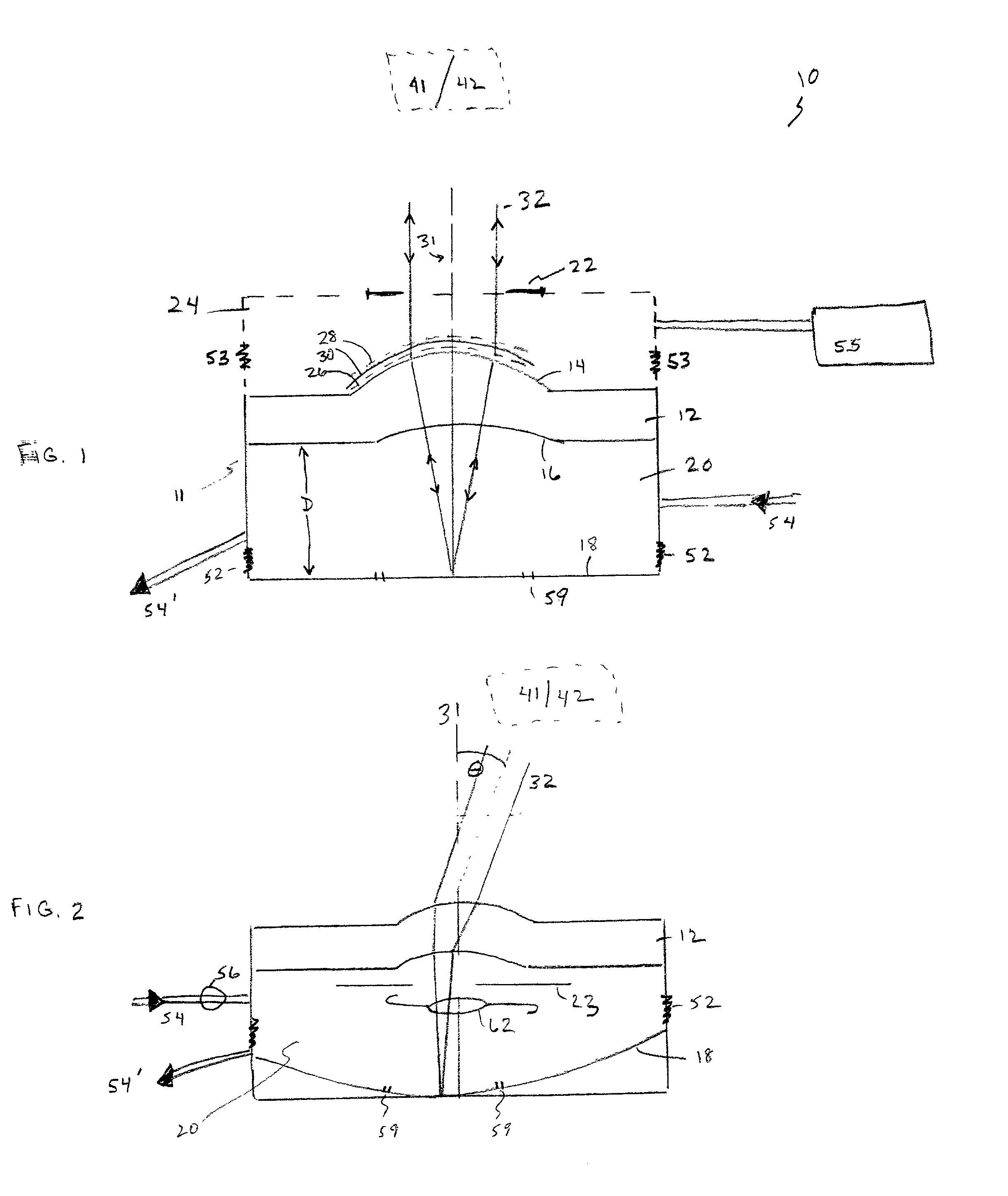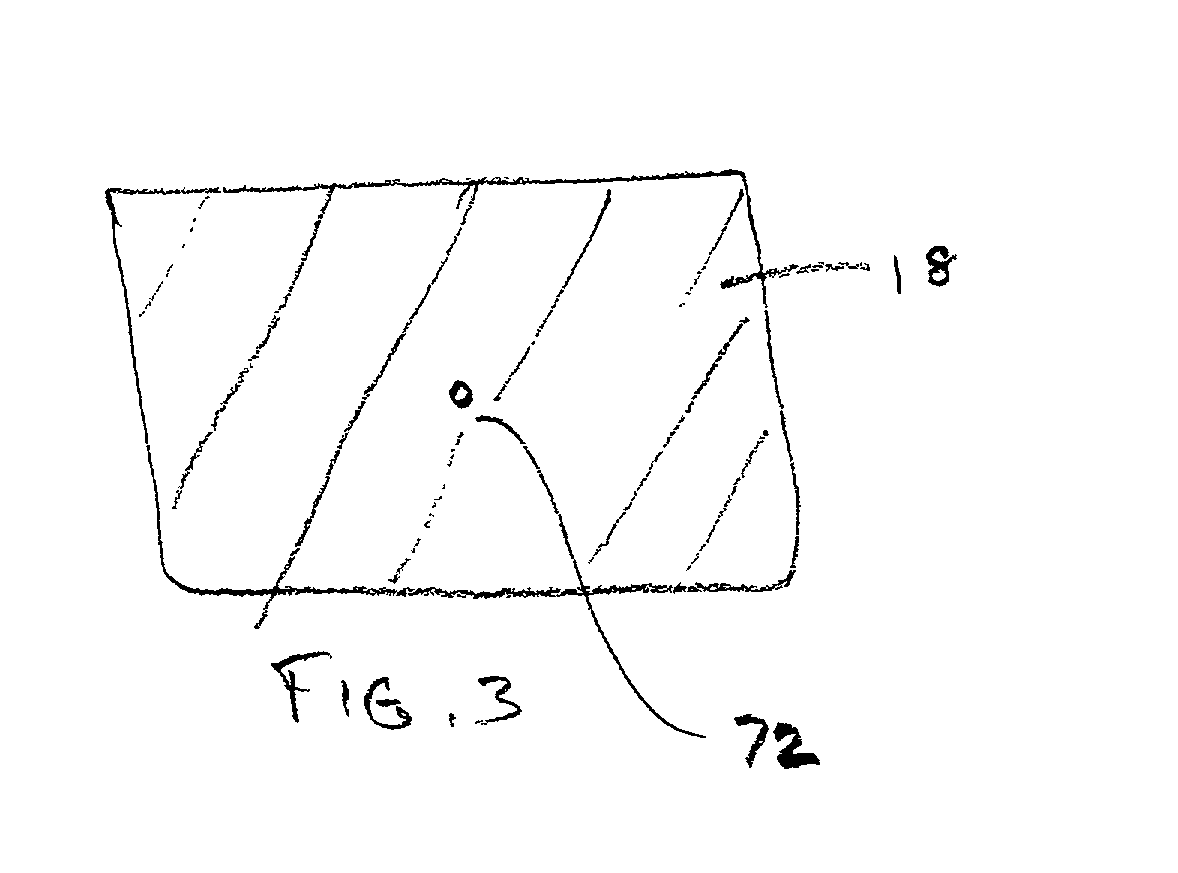Lens-eye model and method for predicting in-vivo lens performance
a lens performance and lens model technology, applied in the field of lens performance measurement methods and apparatus, can solve problems such as difficult prediction of soft contact lens performance in-vivo, and achieve the effect of accurately predicting in-vivo lens performan
- Summary
- Abstract
- Description
- Claims
- Application Information
AI Technical Summary
Benefits of technology
Problems solved by technology
Method used
Image
Examples
Embodiment Construction
[0013] A schematic drawing of a model eye system 10 according to an embodiment of the invention is shown in FIG. 1. The model eye system 10 has a structural housing 11 and includes a representative cornea 12 having an anterior surface 14 and a posterior surface 16. A retinal surface 18 is located posterior to the posterior corneal surface 16 at a distance, D. A dispersion medium 20 is located between the posterior corneal surface 16 and the retinal surface 18. An optional enclosure 24 (shown in dotted lines) having a variable aperture 22 for light entry and exit, surrounds the anterior corneal surface 14 to provide a controlled environment as necessary or desired for the measurement being conducted. As illustrated, a soft contact lens 30 is located on the anterior corneal surface 14.
[0014] The housing 11, in the region of the dispersion medium 20, is shown having flexible joints 52 that allow the separation distance D between the cornea 12 and the retinal surface 18 to be adjusted f...
PUM
| Property | Measurement | Unit |
|---|---|---|
| Temperature | aaaaa | aaaaa |
| Pressure | aaaaa | aaaaa |
| Power | aaaaa | aaaaa |
Abstract
Description
Claims
Application Information
 Login to View More
Login to View More - R&D
- Intellectual Property
- Life Sciences
- Materials
- Tech Scout
- Unparalleled Data Quality
- Higher Quality Content
- 60% Fewer Hallucinations
Browse by: Latest US Patents, China's latest patents, Technical Efficacy Thesaurus, Application Domain, Technology Topic, Popular Technical Reports.
© 2025 PatSnap. All rights reserved.Legal|Privacy policy|Modern Slavery Act Transparency Statement|Sitemap|About US| Contact US: help@patsnap.com



